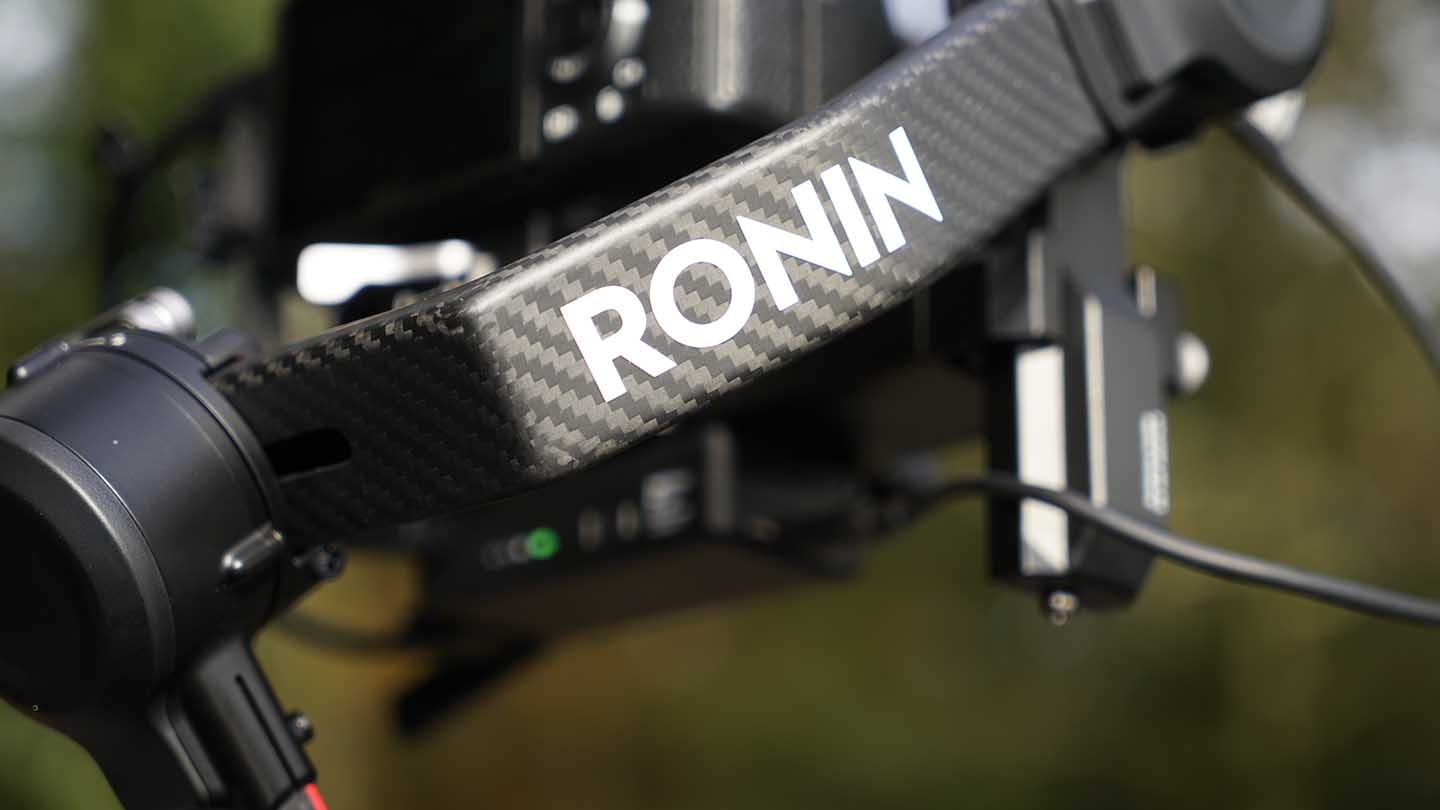There are little if any design similarities between the new DJI RS 2 and the Ronin-S. The metal arms have all been replaced by a Carbon Fibre monocoque design, and every other element from the joystick, mounting points, focus wheel and grip have been improved and enhanced.
This is not an update with a few tweaks to the Ronin-S design; this is a complete reworking.

The most significant update aside from the dramatic design change is the payload which has increased from 3.6kg to 4.5kg. It’s also lighter than the Ronin-S coming in at 1kg 0.81kg lighter.
That’s not all it is also smaller, which has been made possible by the advances in technology. The new RS 2 measures in at 410 x 260 x 195mm including the grip but without the extension, grip added.
The design also sees a huge series of additions, including a 1.4-inch full-colour LCD touchscreen; this enables you to flick through options and settings quickly.
Another big change is the addition of professional RSA/NATO ports that enable the new RS 2 to be incorporated into larger, more complex rigs or control systems.
For those of us not working on multi-million dollar productions, it’s good to see that there are still more common ports and connections including 1/4-inch mounting hold and cold shoe mount.
As with the previous Ronin-S, there are several possibilities for wired connections; these include Video transmission/follow focus motor port (USB-C), RSS camera control port (USB-C) and Follow Focus motor port (USB-C). As all of these ports are USB-C, so I was glad to see that DJI has marked which port is which.
As before the operating time in ideal conditions is 12 hours, and a BG30-1950mAh 15.4 LiPo 4S is used to power the RS 2. This has a charging time of 1.5h, which isn’t at all bad.
As ever the RS 2 offers a Bluetooth connection between the gimbal and the Ronin App available for both iOS and Android devices. This Bluetooth connection utilises the latest Bluetooth 5.0 technology.
The maximum controlled rotation remains the same as the Ronin-S at 360º through all axis. There is some change with the mechanical endpoints with the tilt axis changing from: Ronin-S 205° to – 115°, RS 2 -112° to +214° and Roll; Ronin-S 230° to – 90°, RS 2 -95° to +240°.






